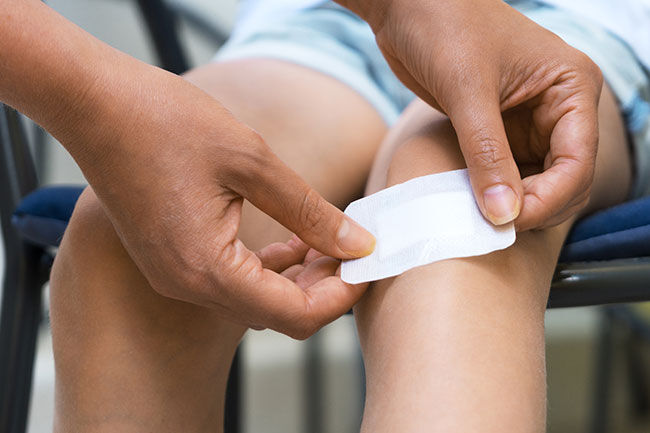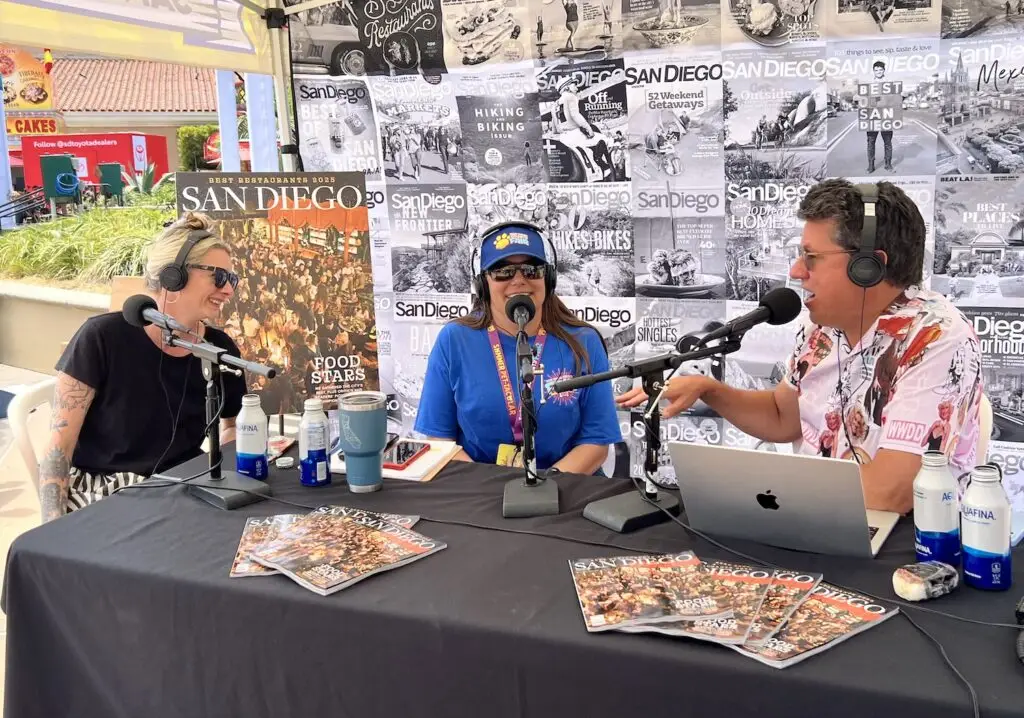
How To Make a Child’s First Aid Kit
This post contains affiliate links to products and services. We may receive compensation when you click on links.
Kids are little bundles of joy and energy. They can put a smile on your face and give your life meaning, but they’ll also make you stress and fret in a way you never have before. They’re reckless; their self-preservation skills need work, and even in an age where kids are more likely to spend their days watching YouTube videos than climbing trees, you’ll still spend a lot of time putting Band-Aids on cuts.
A first aid kit is essential in any home with children. It’ll be there when they fall off their bikes or suffer a nosebleed and it could save a lot of tears for them and headaches for you.
What is a First Aid Kit?
A first aid kit is a collection of equipment and supplies designed to treat injuries and medical conditions. They vary in size and content but typically include a variety of bandages, gauzes, and medications. A first aid kit is usually kept at home and/or in the car, ensuring that it is always within reach in case of an emergency.
What Should You Include in a Child’s First Aid Kit?
You can buy pre-built first aid kits from your local pharmacy or even Amazon. They come in a variety of sizes, from compact kits that cost less than $30 and include numerous essentials to ones that go all-out and cost hundreds of dollars.
The problem with these kits is that they may not contain the things you need and may use cheap variations of the ones you do. You could end up with a lot of stuff you don’t need, some stuff you can’t use, and some absent items.
It’s best, therefore, to build your own first aid kit.
The list below highlights all of the things that you should consider including in a first aid kit for kids.
A sturdy container
Before you think about bandages and medications, you need somewhere to actually store everything.
Consider how big the kit will be, the items it will include, and where it will go. An all-encompassing kit designed for the home may be best suited to a rigid container that can be slid under a bed or even affixed to a wall; a kit made for long road trips should be smaller and more convenient so it can fit in the glove box.
Band-Aids of various sizes
A simple, cheap, and essential item that should be included in every kit. Buy a selection of various sizes to cover all bases.
Antiseptic wipes and antibiotic ointment
Before you think about applying Band-Aids or bandages, those wounds need to be cleaned. Antiseptic wipes are a quick and easy way to clean wounds and antibiotic ointment can also protect against infection.
Essential medication
Grab a few essential over-the-counter medications from your local pharmacy. Painkillers are key (Tylenol, Advil) and you should also include aspirin and allergy medications.
Sterile gauze pads
Gauze pads can be used to treat cuts, burns, and blisters. They work by creating a sterile barrier that still allows air to flow through.
Instant ice packs
Instant ice packs are plastic bags filled with liquids that become cold when agitated. If your child suffers a sprain or fracture, just “break” the pack and apply it to the area to reduce swelling.
Scissors
You never know when you’ll need a good pair of scissors. They can be used to cut bandages, gauzes, and clothing following an injury.
Tweezers
Splinters, glass, thorns, and even insects can all cause infections if they are not treated. They’re also a nuisance, so it’s best to get rid of them as quickly as possible. Include a set of tweezers to remove those pesky intrusions with ease.
Medical tape
Those gauzes and bandages need to be secured, so include a roll of medical tape.
A thermometer
Fever is often a sign that an otherwise minor illness has progressed into something more serious. It can also tell you whether someone is suffering from a serious infection. A thermometer should be included so you can always check your child’s temperature.
Emergency blanket
An emergency blanket is always a good addition to a large first aid kit, especially if it will be used outside of the house.
Sunscreen
Protect against burns by including a bottle of sunscreen. Remember to apply every couple of hours, and even more frequently if your child is swimming.
Insect repellent
The only thing that can ruin a day trip faster than a screaming child with a cut knee is a swarm of mosquitos. So, don’t forget a bottle or two of insect repellent.
Nampons
Kids are always getting nosebleeds, so Nampons make a great addition to your first aid kit.
Nampons are small absorbent tubes that contain a blood clotting agent. Just insert, wait for the bleeding to stop, and then remove. No mess, no issue, and definitely no tissues. They even come individually sealed so you can easily add them to your kit.
First aid manual
Now that you have the supplies, you need to know how to use them. If you’re not clued up on medical treatments, include a small leaflet or sheet in your first aid kit that includes a guide to common injuries, issues, and treatments.
Other Tips for Making a Child’s First Aid Kit
Although a first aid kit is made to be used in an emergency, you can’t simply make it and then leave it for many years. Many first aid supplies will expire, and if you’re not regularly updating the kit, they won’t be there when you need them.
It also needs to be within reach during those emergencies, so keep a separate kit in your car or take your main kit with you wherever you go.
How to Store a Child’s First Aid Kit
Keep the first aid kit somewhere cool and dry to prolong the life of the supplies within.
Include the words “First Aid Kit” and “Do Not Open” on the kit so everyone knows what it is.
Keep it out of reach of children, but make it accessible to adults.
If you drive a lot or take long road trips, keep a kit in the car.
FAQs
Why do you need a first aid kit for your child?
Kids are always suffering from scrapes, cuts, and breaks, so it helps to keep something on standby that will help them.
How do you make a simple first aid kit?
A simple kit is one that covers the most basic needs. For the home, that may include some gauze, a handful of Band-Aids, some painkillers, and a few bandages. Just add these things to a small box or bag and you’re good to go!
What does the American Red Cross say about first aid kits?
The Red Cross recommends including some very specific things in a first aid kit, many of which we discussed above. The Red Cross list is as follows:
- 2x absorbent dressings (5 x 9″)
- 25 adhesive bandages of varying sizes
- An adhesive cloth
- An emergency blanket
- An emergency breather
- 2 pairs of nonlatex gloves
- 5 antibiotic ointments
- A 4-inch wide roller bandage
- 2 triangular bandages
- 5 antiseptic wipes
- 2 packets of aspirin
- 5 sterile gauze pads (3 x 3″)
- An oral thermometer
- An instant cold compress
- 2 hydrocortisone ointment packets
- First aid instructions
- Tweezers
Where can I buy first aid kit items?
You can pick up low-cost supplies from Amazon and Walmart, as well as your local dollar store.
How much do pre-made first aid kits cost?
Pre-made kits vary in price, usually beginning at around $20 and costing up to several hundred bucks.
Conclusion: Making a First Aid Kit for Kids
You can’t guarantee that your child will never have an accident at home or on the road. It doesn’t matter how careful and protective you are or how much childproofing you install in your home. What you can guarantee, however, is that you’re prepared when such an accident occurs, and that’s where first aid kits come in.
PARTNER CONTENT
Whether you’re building a first aid kit for the car, home, or outdoor adventures, be sure to include bandages, Band-Aids, gauze, and essential equipment (including tweezers and scissors). Cover all of your family’s emergency needs, check expiration dates, and store the kit somewhere it can be seen and used without being accessible to small children.
Related Content
- What Causes Nosebleeds?
- 5 Ways to Stop a Nosebleed
- How to Make a Child’s First Aid Kit
- When to Worry about a Nosebleed
- What You Need for Allergy Season



















